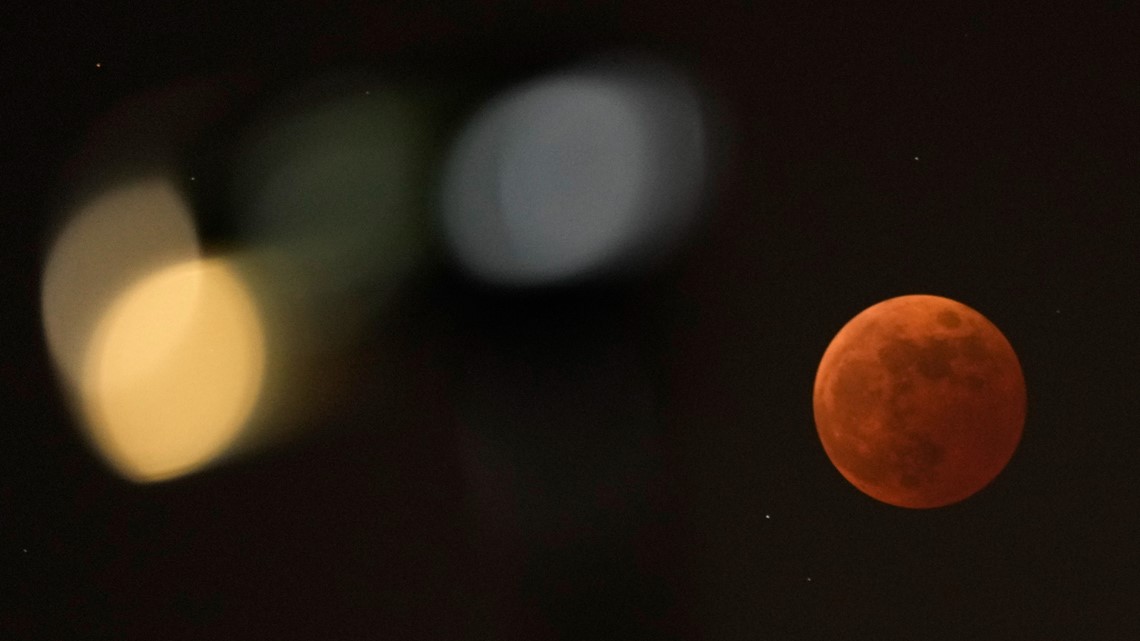WASHINGTON — The lunar eclipse next week will serve as an opening act to the total solar eclipse in April.
Starting late Sunday night and into the early hours of Monday, March 25, the moon is set to pass through the outer part of the Earth's shadow, resulting in a penumbral lunar eclipse. Lunar eclipses come hand in hand with solar eclipses, with each event happening within weeks of each other, according to NASA.
The lunar eclipse on Monday sets the stage for the total solar eclipse that will crisscross North America just two weeks later.
What is a penumbral lunar eclipse?
There are three types of lunar eclipses: Total lunar eclipse, partial lunar eclipse and penumbral eclipse.
Penumbral eclipses are the most subtle of the three, in fact, you might not even know it's happening unless you're on the lookout, NASA says.
During this eclipse, the moon's light will slightly dim as the moon travels through the earth's penumbra — the faint outer part of its shadow. The space agency suggests looking at the moon early in the night and then later around the peak of the eclipse to fully experience the difference in brightness.
Total lunar eclipses and partial lunar eclipses tend to bring out more oohs and ahhs than the penumbral lunar eclipse. Total lunar eclipses usually give the moon a reddish tint, granting them the nickname "blood moon." During a partial lunar eclipse, the moon will appear bitten.
Lunar eclipses happen roughly four to seven times every year, according to NASA.
When is the lunar eclipse?
The March 2024 penumbral lunar eclipse will start at 1 a.m. Eastern on Monday, March 25 (10 p.m. Pacific on Sunday, March 24) and end at 5:30 a.m. Eastern (2:30 a.m. Pacific).


What is the difference between a solar and lunar eclipse?
The two types of eclipses are broken into lunar and solar.
During a lunar eclipse, the earth's shadow falls on the surface of the moon and dims its light. A solar eclipse is much more dramatic, and rarer to encounter, as the moon blocks the sun — turning day into night for a few minutes.
When is the next lunar eclipse 2024?
The upcoming penumbral lunar eclipse will happen in the early hours of Monday, March 25.
After this faint lunar eclipse, the next one in the Americas will be on September 18, 2024. This one will be a partial eclipse, one in which a dark shadow partially covers the moon.
It won't be until nearly a year later, on March 14, 2025, that the U.S. sees a total lunar eclipse, otherwise known as a "blood moon" for its reddish color.



